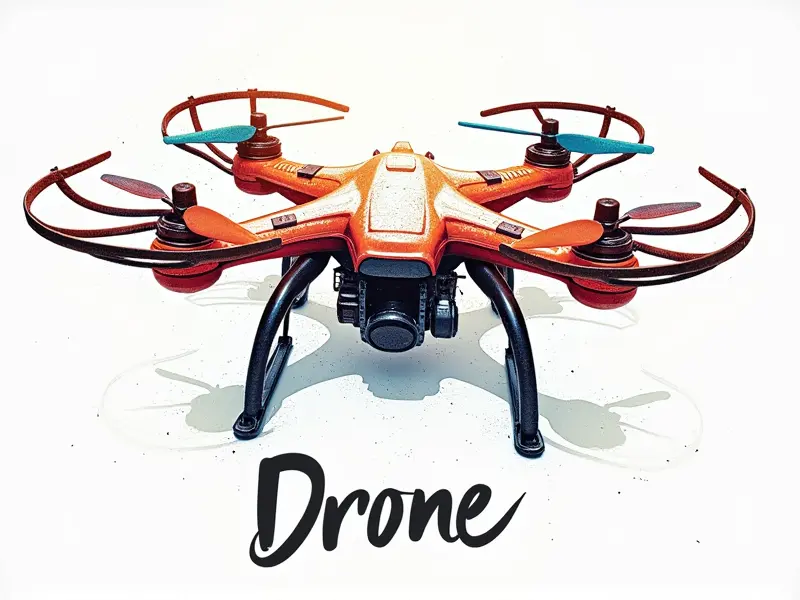Can drones carry payloads?

The Future of Drone Delivery Services
Drones have emerged as a revolutionary technology in the logistics and delivery industry. As companies like Amazon, Google, and FedEx explore drone-based delivery systems, the potential for efficient and cost-effective transportation is immense. These unmanned aerial vehicles (UAVs) can deliver goods directly to customers' doorsteps or remote locations where traditional delivery methods are impractical.
With advancements in battery technology, aerodynamics, and autonomous navigation, drones are becoming more capable of carrying heavier payloads over longer distances. This shift opens up new possibilities for businesses looking to streamline their operations and reduce costs.
Can Drones Lift Heavy Loads?
The ability of drones to lift heavy loads is a critical factor in determining their utility across various industries. While early models were limited to lightweight packages, modern drones are being designed with robust frames and powerful motors that can handle more substantial cargo.
Factors such as the drone's size, motor power, battery capacity, and aerodynamic design all contribute to its payload capacity. As technology advances, we're seeing drones capable of carrying loads ranging from a few grams up to several kilograms.
Drone Payload Capacity Explained
The payload capacity of a drone refers to the maximum weight it can carry while still maintaining stability and flight performance. This includes not only the cargo but also any additional equipment such as cameras, sensors, or communication devices.
To determine the payload capacity, manufacturers conduct rigorous testing under various conditions to ensure that the drone remains safe and functional even when operating at its limits. Understanding these specifications is crucial for users who need to transport specific items via drones.
FPV Racing Drones & Payload Capabilities
First-person view (FPV) racing drones are designed primarily for speed and agility, making them less suitable for carrying heavy payloads compared to other types of drones. However, advancements in technology have allowed some FPV models to incorporate small cameras or sensors without significantly compromising their performance.
RC Helicopters: Payload Potential Revealed
Remote-controlled (RC) helicopters offer unique advantages when it comes to payload capacity due to their vertical takeoff and landing capabilities. These drones can lift heavier loads compared to traditional quadcopters, making them ideal for applications such as aerial photography or surveying.
Airplane Drones: Transporting Heavy Loads
Fixed-wing airplane drones are engineered specifically for long-range missions and high payload capacity. With their efficient aerodynamics and large wingspan, these drones can carry substantial cargo over extended distances, making them suitable for delivery services or surveillance operations.
Payload Limits for RC Quadcopters
Quadcopter drones are the most common type used in consumer applications due to their stability and maneuverability. However, they have limitations when it comes to carrying heavy loads. The payload capacity of a quadcopter depends on several factors including motor power, battery size, frame design, and propeller efficiency.
How Much Weight Can Drones Carry?
The weight that drones can carry varies widely depending on the model and intended use case. For instance, small consumer-grade drones may only be able to lift a few grams of cargo, while larger commercial models designed for industrial applications might handle several kilograms.
To maximize payload capacity, manufacturers continuously innovate by integrating lighter materials, more powerful motors, and advanced battery technology into their designs.
Drone Technology: Transporting Heavy Loads
Innovations in drone technology are pushing the boundaries of what these machines can do. Features such as multi-rotor configurations, hybrid propulsion systems, and intelligent flight control algorithms enable drones to carry heavier payloads more efficiently than ever before.
Advancements in Drone Load Capacity
The future looks bright for drones capable of transporting heavy loads. Research into new materials, battery chemistry, and aerodynamic designs promises to further increase payload capacity while maintaining or improving flight performance.
Real-World Uses for Drone Payloads
Drones equipped with the ability to carry payloads find applications in numerous industries:
- Agriculture: Drones can transport sensors, cameras, and other equipment used for crop monitoring and management.
- Construction: They deliver small tools, materials, or safety gear to workers on-site.
- Military & Security: Military drones carry surveillance equipment, weapons, or supplies in combat zones.
- Medical Services: Drones transport medical supplies and emergency kits to remote areas.
Conclusion
The potential for drone delivery services is vast as technology continues to advance. With improvements in payload capacity, drones are becoming increasingly versatile tools across various industries. From agriculture to military operations, the ability of drones to carry heavy loads opens up new possibilities and efficiencies that were previously unimaginable.

